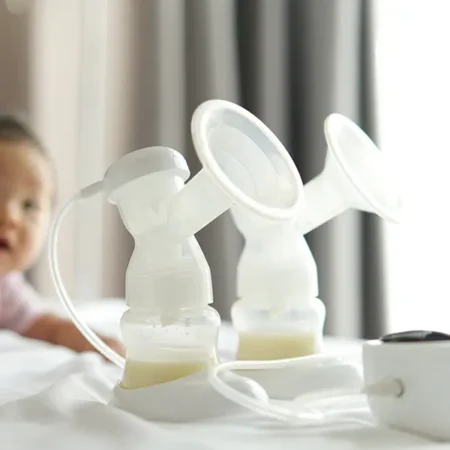My friend Nico, who was immeasurably helpful to me when I was trying to get and stay pregnant with my babies, exclusively pumped for her third son. She kept track of all of her output in an app, and was awesome enough to download the data so that I could play with it. I thought that I’d present the results here as an exclusive pumping output case study.
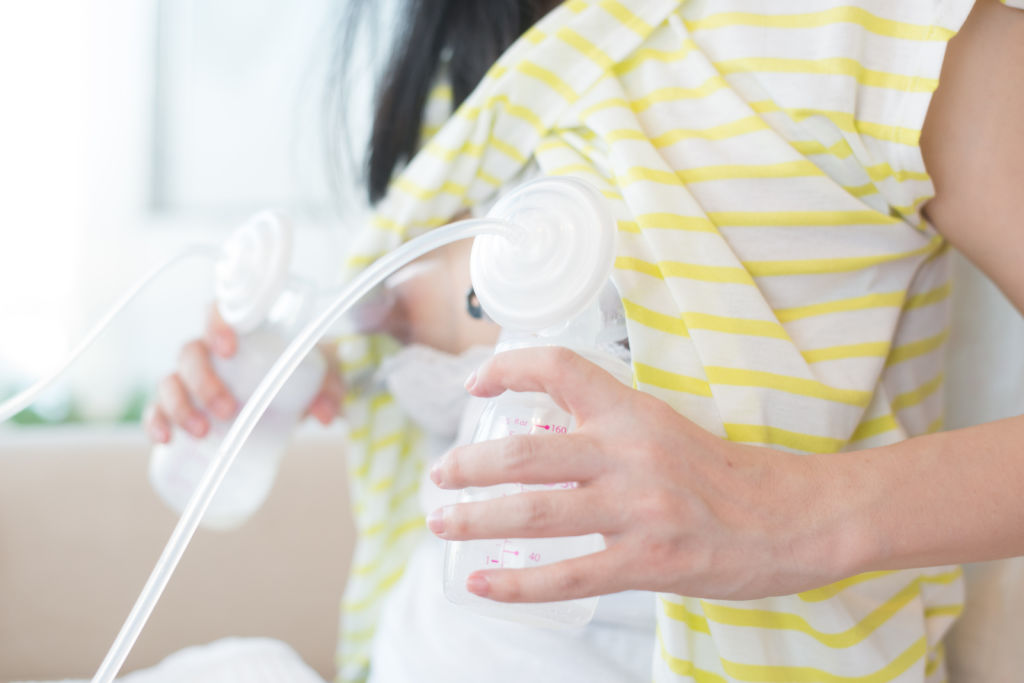
This post may contain affiliate links, which means if you click a link and purchase something, I may make a small commission at no additional cost to you. I only recommend products I love! More information here.
The below graphs show how Nico’s pumping output was affected by time, length of session, how many pumping sessions she was doing, etc.
What is the Relationship Between Total Output and Amount of Time Spent Pumping?
This graph shows the average amount of milk that was pumped (in ounces) by the length of the pumping session:

What this graph shows is that the amount of milk that Nico pumped increased proportionally to the amount of time that she spent pumping until about the 20 minute mark.
After that point, there didn’t appear to be much benefit in pumping longer.
Note: If you’re exclusively pumping, you generally want to aim for 120 minutes total of pumping per day. Often, after the milk stops flowing, you can get more letdowns.
Does Each Side Produce About the Same Amount of Milk?
Nico’s app tracked output for each side, so I thought I’d see if she had a “dominant” producer:
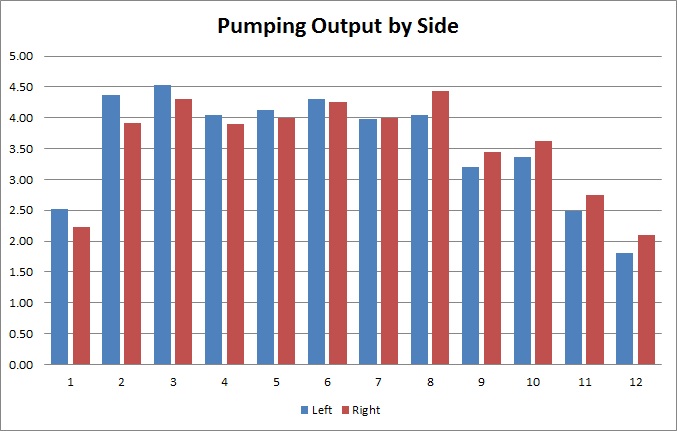
It’s interesting to see here how the left side starts off as the higher producer, it evens out at month 5, and then the right side pulls into the lead at 8 months postpartum.
Most people – about 94% in one poll I did – have a “slacker boob.” You don’t have to do anything if this is the case for you, but if you want to try to even things out, here are some things you can try.
How Do the Number of Pumping Sessions Per Day Affect Milk Output?
The below graph shows how Nico’s total daily output (over a 24 hour period) changed based on how many times she was pumping per day:
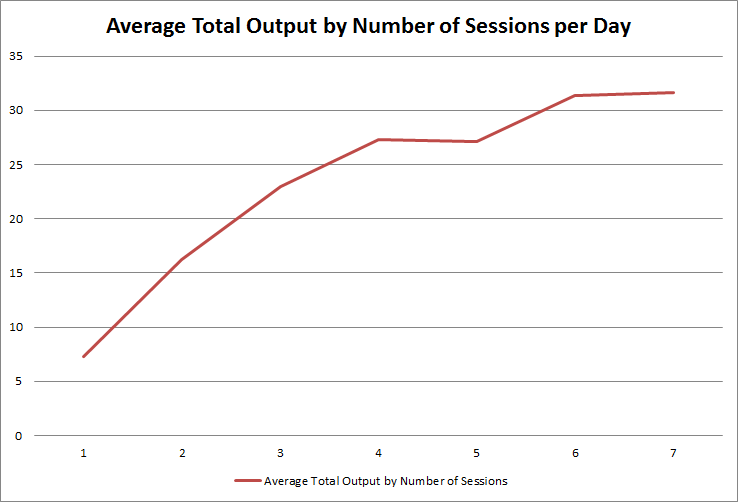
A lot of people wonder whether or not their supply will drop if they drop a pumping session.
In Nico’s case, her supply stayed the same when dropping from 7 to 6 pumps and from 5 to 4, but otherwise did drop about 5 ounces with every pumping session that she dropped.
(It would probably make more sense for the x axis of this graph to be reversed, since she started with seven sessions per day and dropped down to one.)
The previous graph looked at the total amount that she got over a 24 hour period. What about in each session?
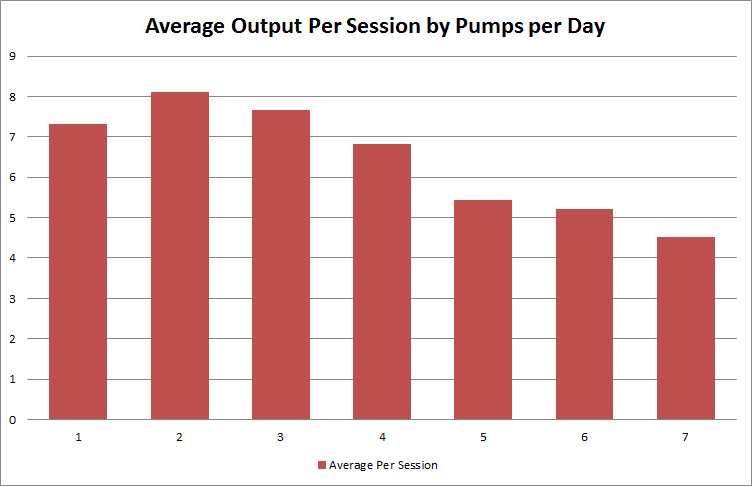
Here we can see that even though the total amount that Nico pumped went down as she dropped pumps, the amount that she pumped per session went up, with the highest average output per session at two pumps per day.
Need help with exclusive pumping? Use EPUMP30 for 30% off
How Does Milk Production Vary Throughout the Day?
The amount of milk that you produce often varies over the course of a 24 hour period. The below pie chart shows the percentage of milk (compared to the total she pumped) that Nico pumped at different time periods:
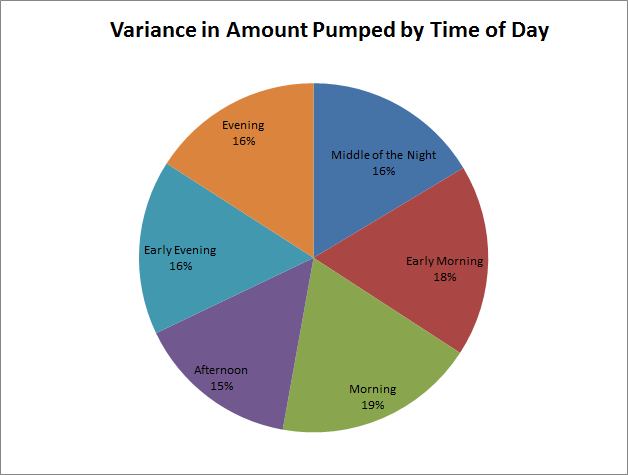
Nico pumped slightly more milk in the morning, but overall her output was pretty consistent regardless of time.
Overall, this is just one exclusive pumper’s experience in terms of output, but I really enjoyed taking a look at the data to see if there were any patterns or trends.
What are your thoughts? Does this exclusive pumping case study match with your experience, or not?



